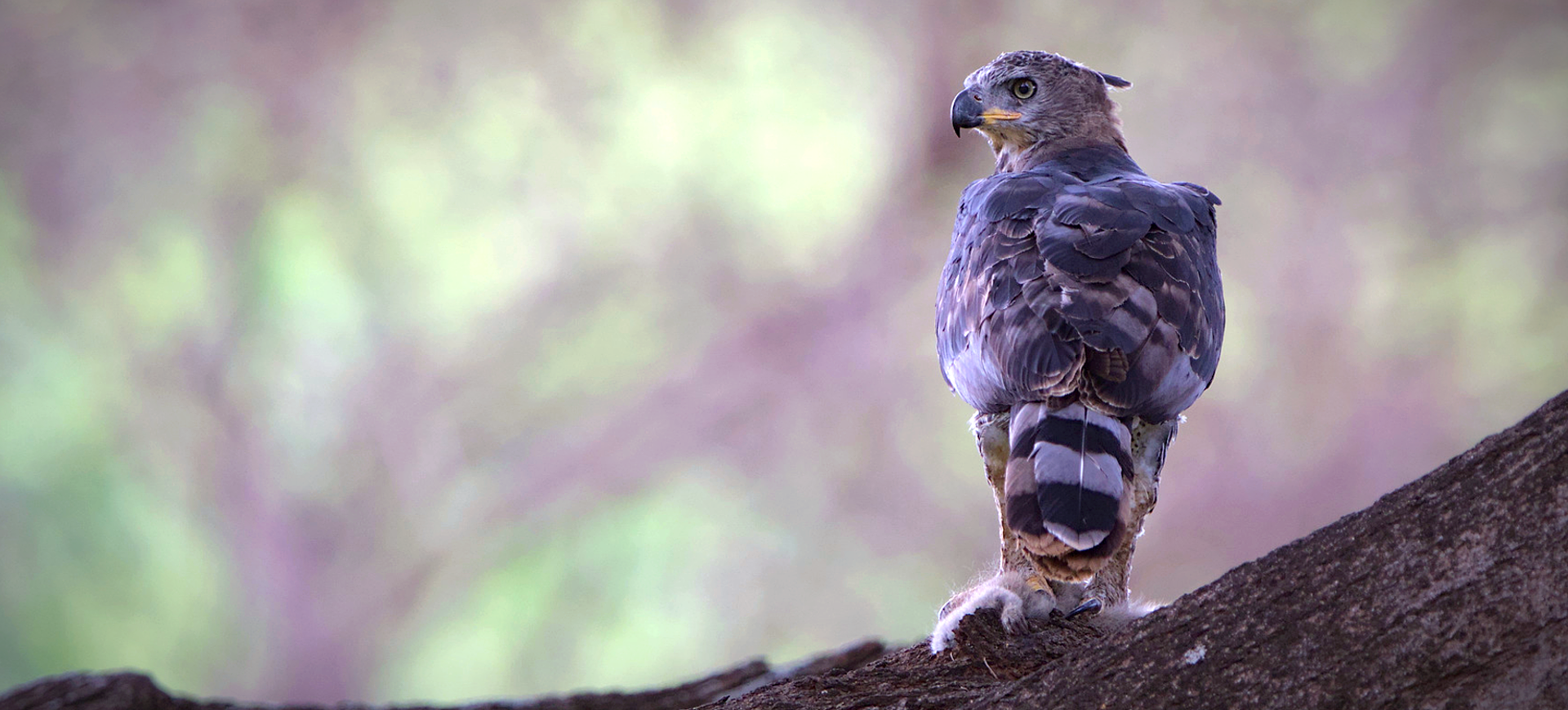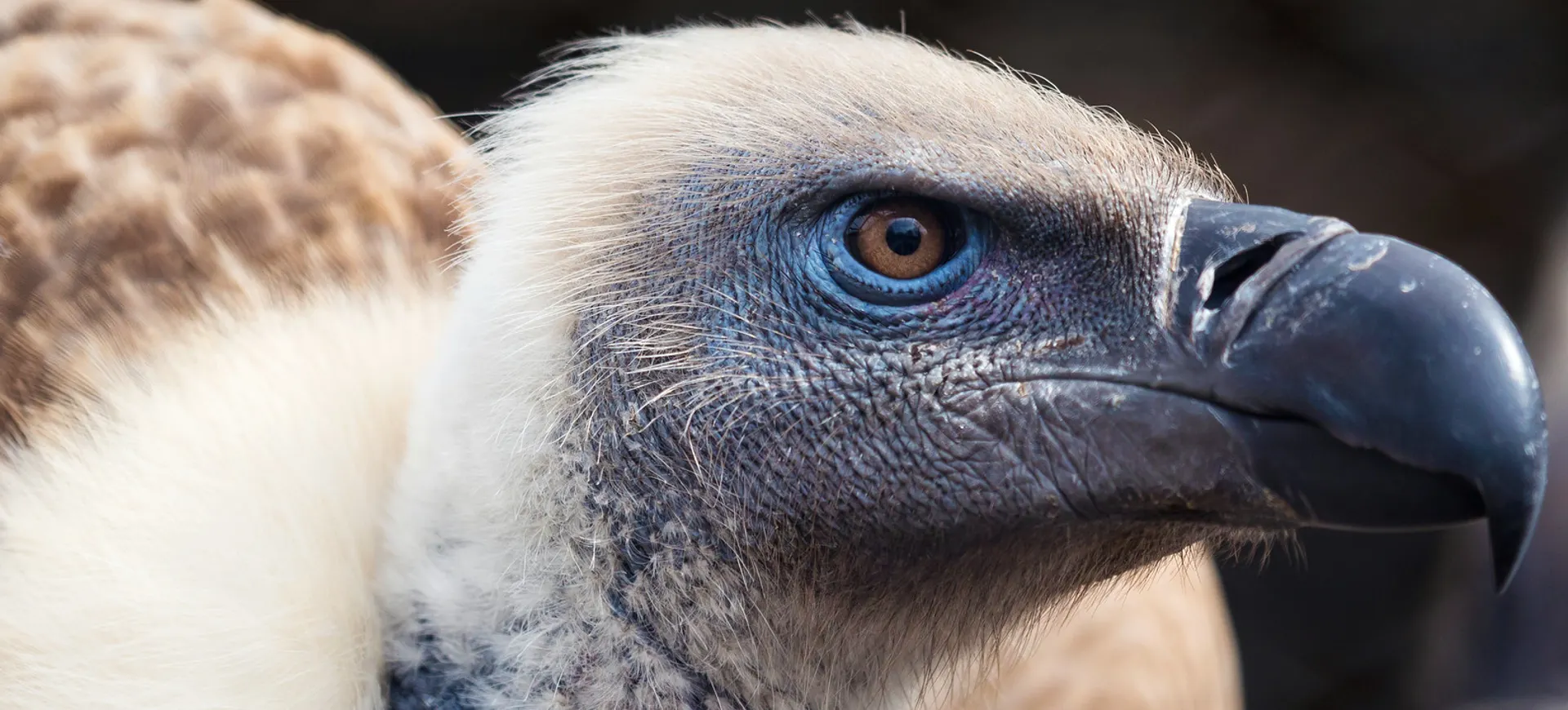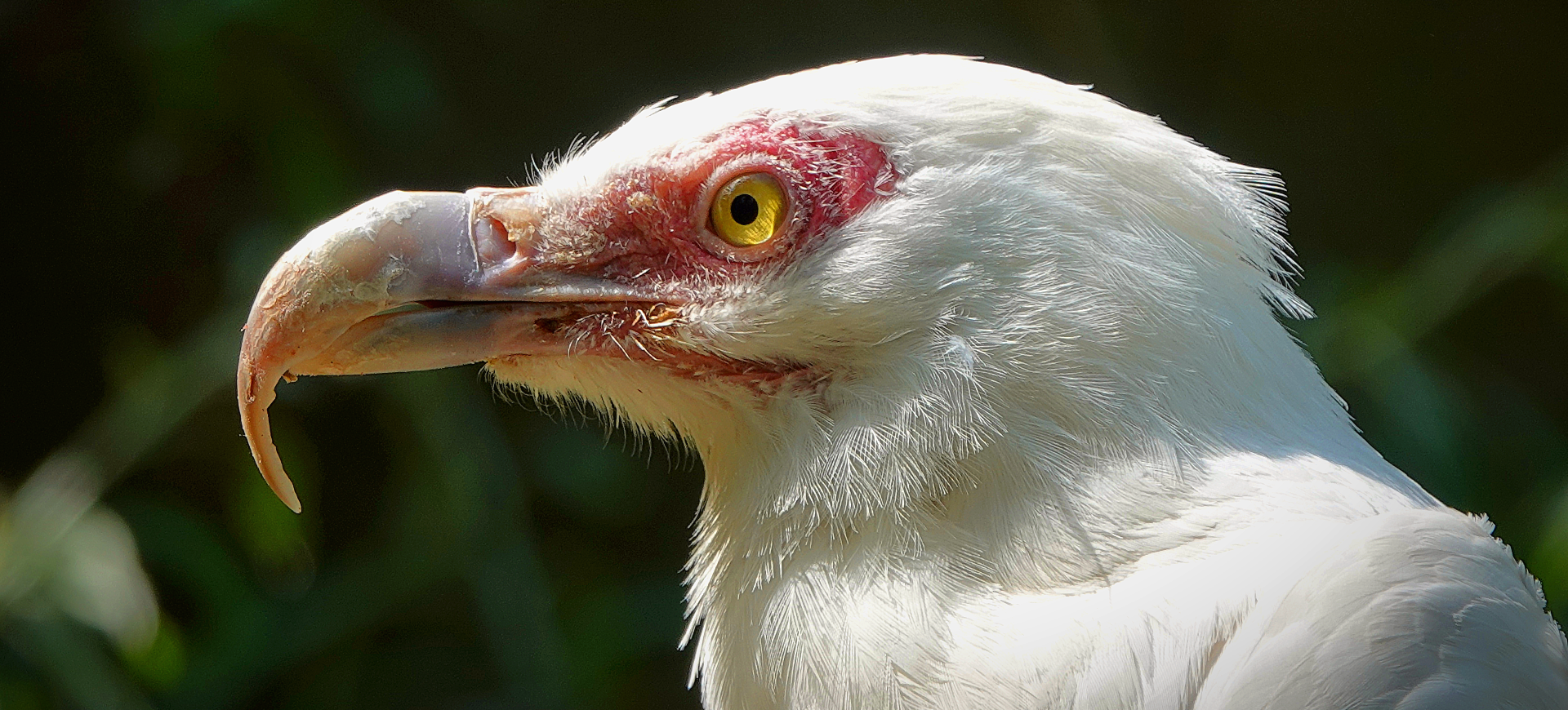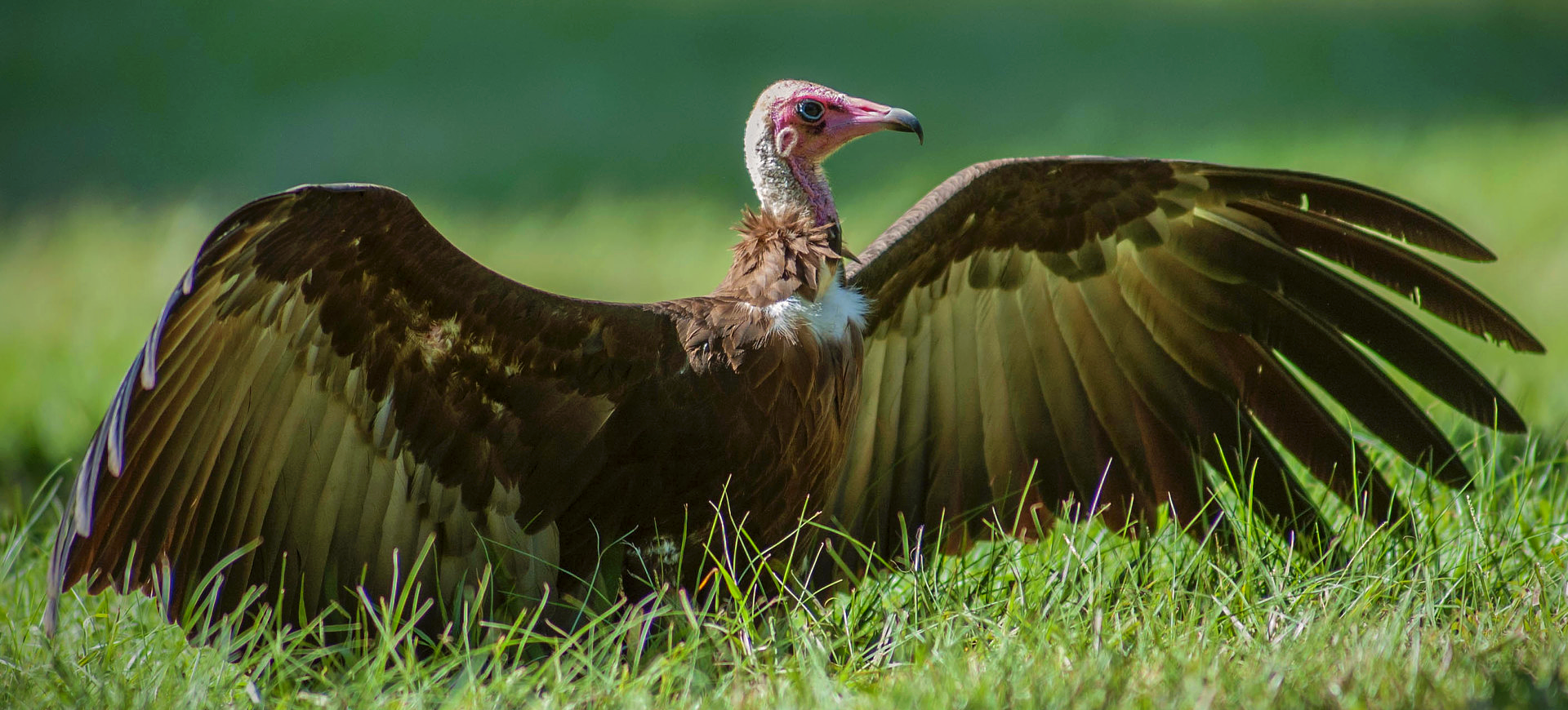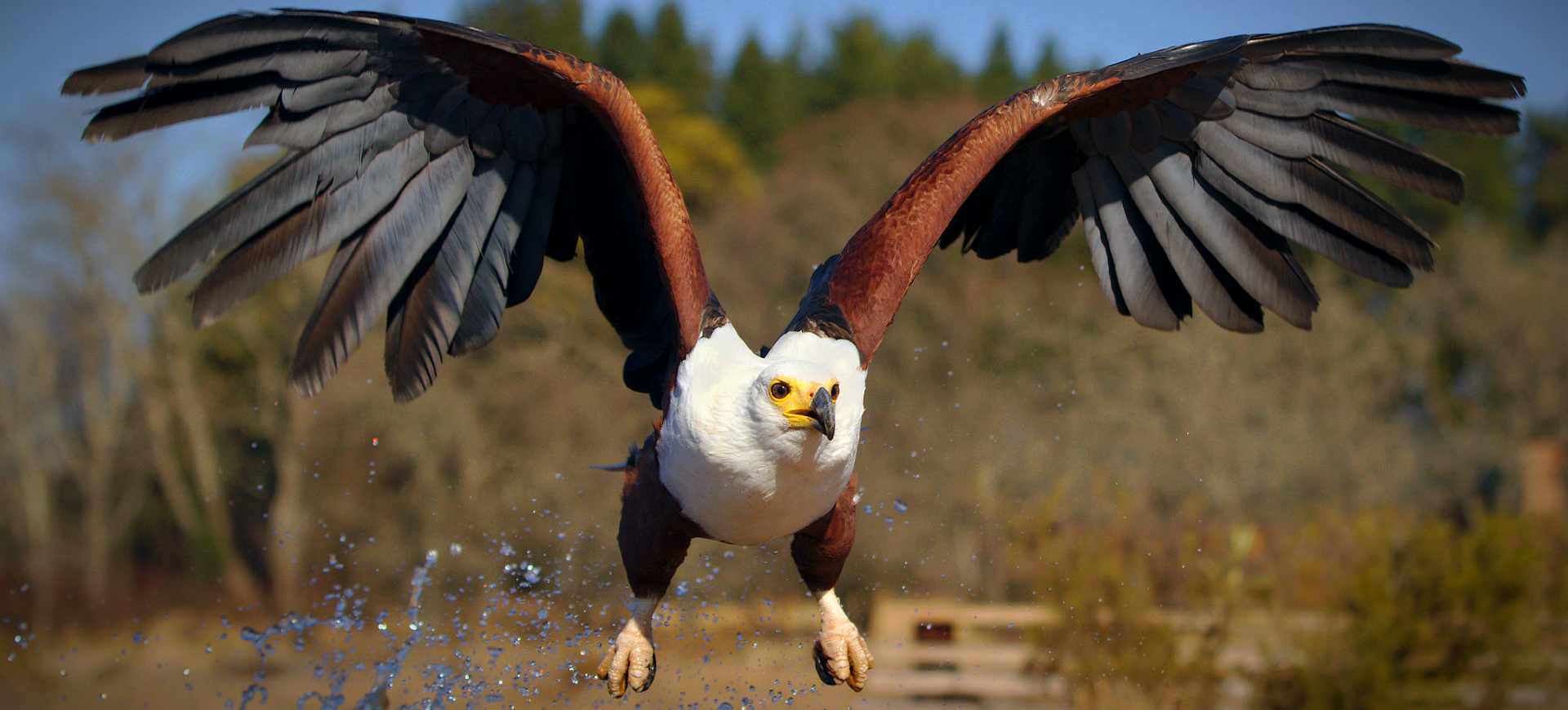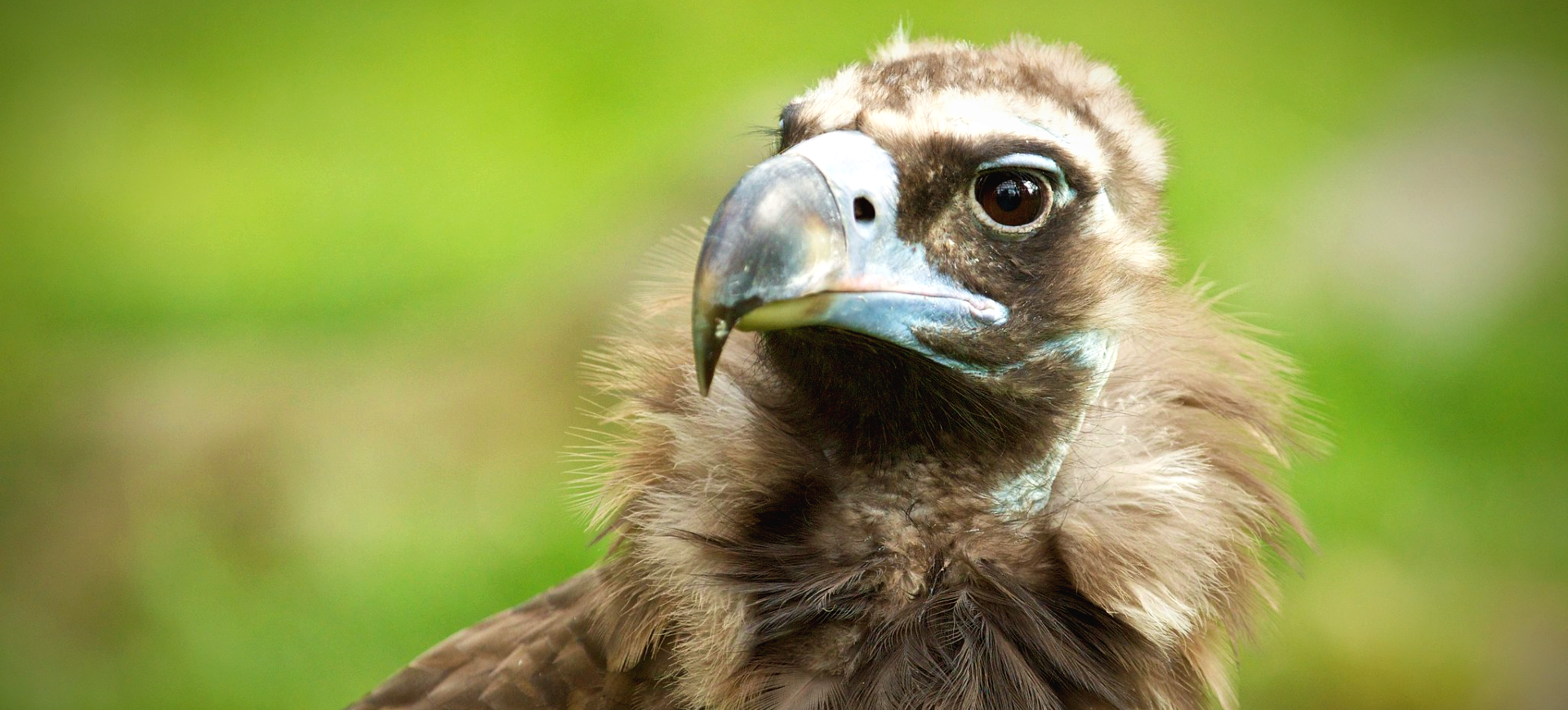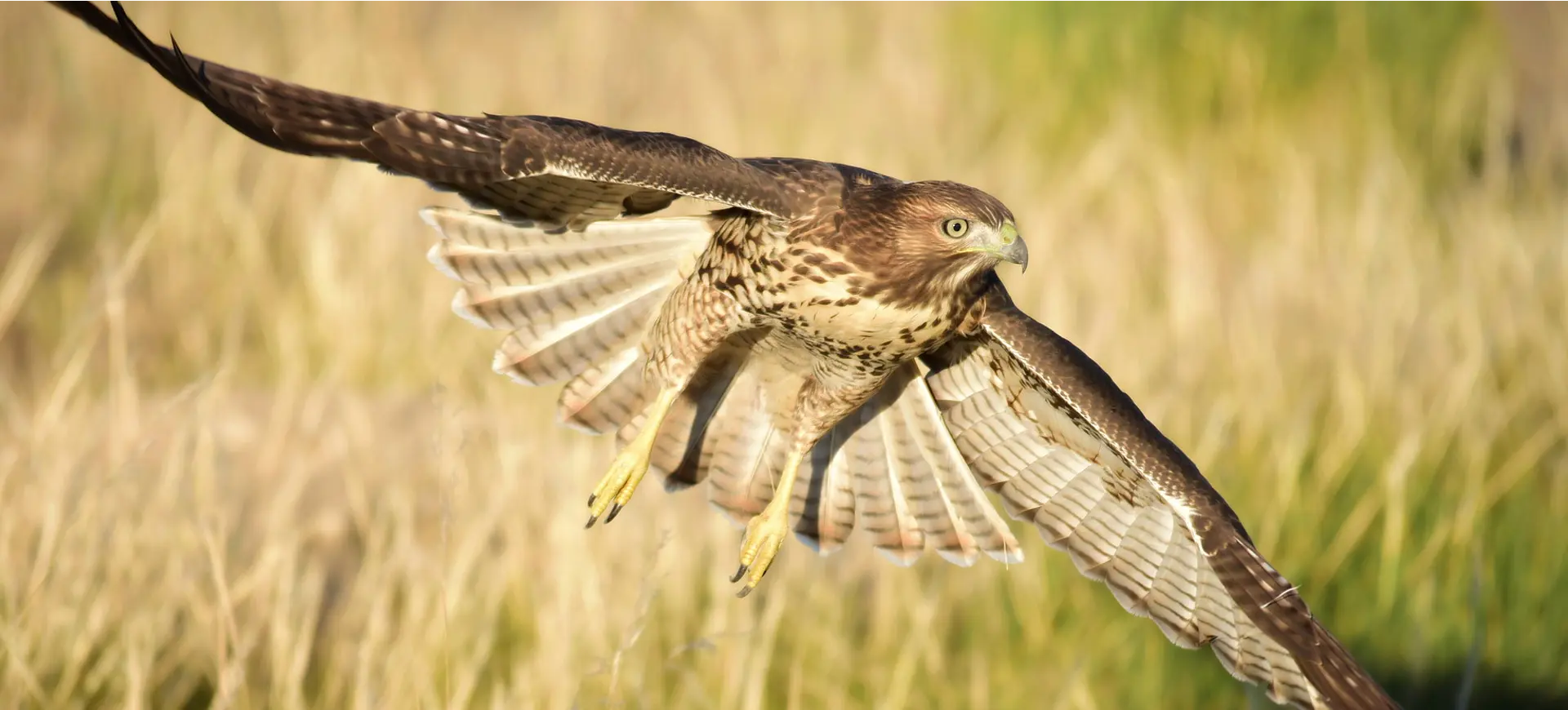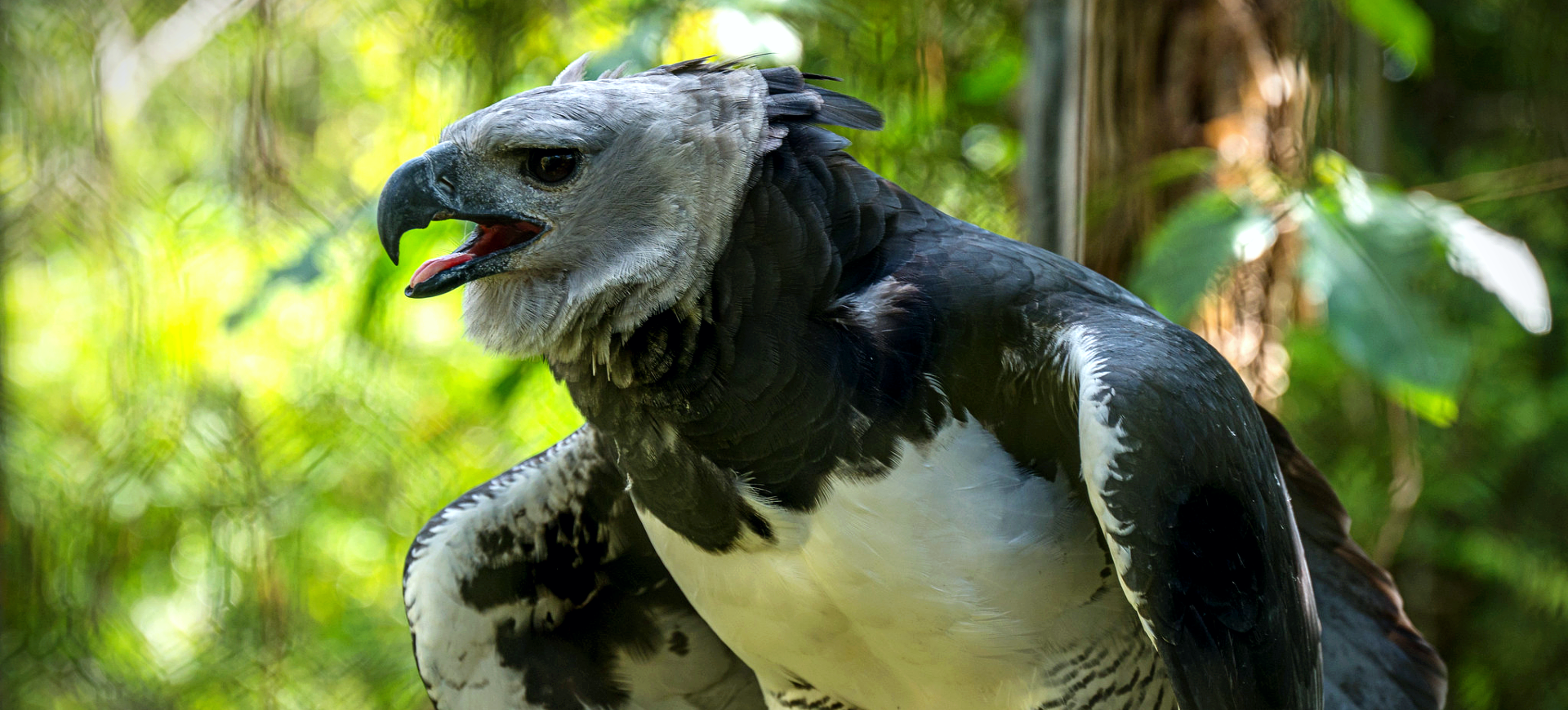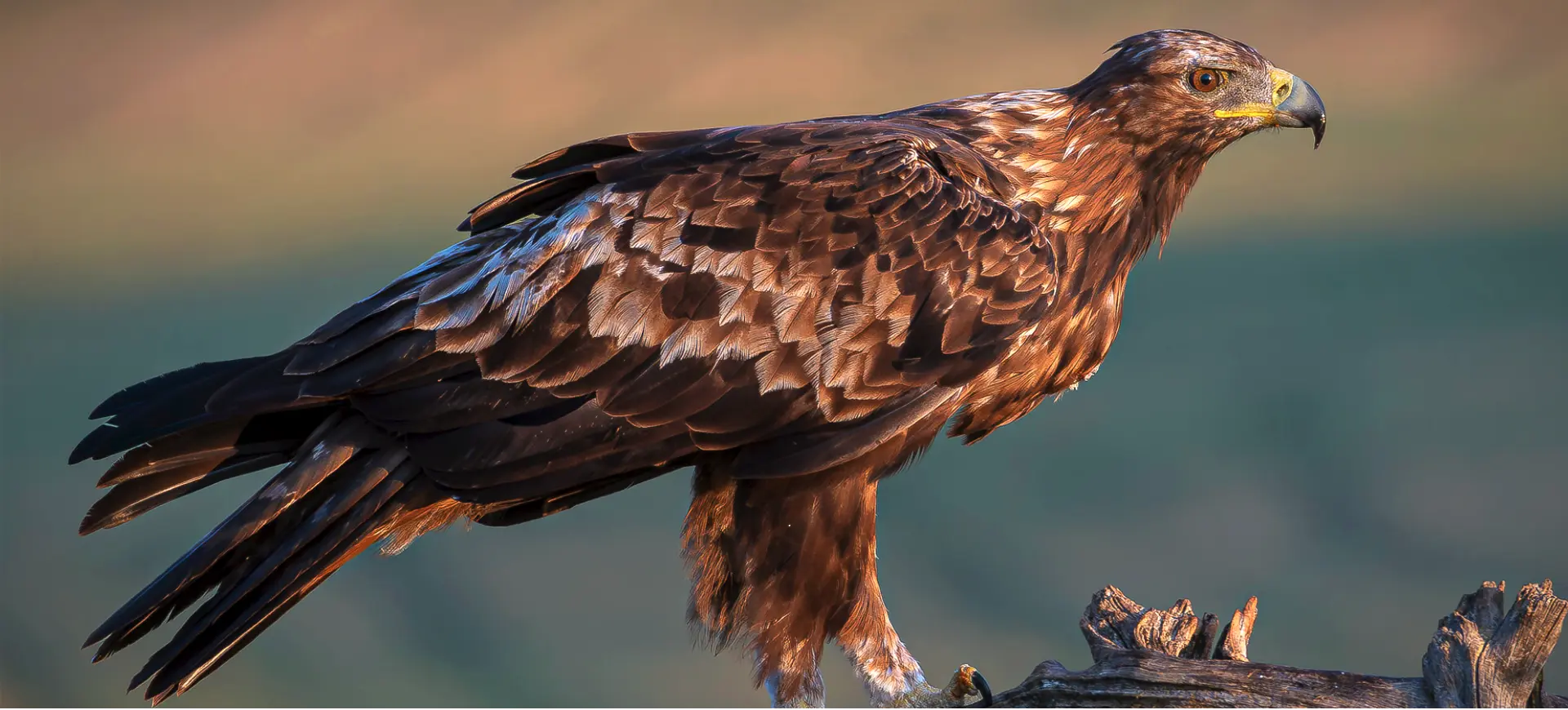Overview
The Bald Eagle (Haliaeetus leucocephalus) is a bird of prey endemic to North America. Renowned for its striking physical attributes and stature, the bald eagle serves as the national bird and emblem of the United States. Despite the name, these birds are not bald; they get their moniker from an old English word, “balde,” which means “white,” referring to the bird’s distinct white head and tail feathers contrasted against a dark brown body. Adults showcase a hooked, yellow beak, while the feet and eyes are yellow, augmenting their regal appearance.
The bald eagle’s size varies across its range, with those in Alaska being the largest. These birds have robust bodies, large heads, and powerful, broad wings, facilitating their soaring and gliding flight patterns. The wings’ layout is such that it reduces turbulence and drag, allowing the eagles to achieve substantial heights and distances. They are known for their dramatic courtship rituals, in which pairs lock talons in mid-air and free-fall for a few seconds before separating and flying away.
Being top predators, bald eagles contribute significantly to maintaining the ecological balance. They mainly consume fish, but their diet also includes a variety of mammals, other birds, and carrion. Bald eagles are also known to pirate or scavenge food from other animals, showcasing their opportunistic feeding behavior. Their keen eyesight and powerful build make them formidable hunters, capable of catching prey in flight, on the ground, or from the water’s surface.
Taxonomy
Kingdom
Phylum
Class
Order
Family
Genus
Species
Type
Current distribution:
Once critically endangered, conservation efforts have successfully increased North America's bald eagle numbers and distribution range. They are now found throughout the continental U.S., Alaska, much of Canada, and northern Mexico. Bald eagles live near bodies of water across this range, including coastal and inland areas. The highest concentrations are found in Alaska and British Columbia due to the vast wilderness areas and abundant food supply.
Bald eagles exhibit partial migratory behavior, with those in the northern range migrating south during the winter to access open water and food supply. Southern populations are generally resident year-round. The species' distribution varies throughout the year due to these migratory patterns. They are widely distributed during the breeding season, but they congregate near large water bodies that provide ample food during non-breeding months.
Physical Description:
The Bald Eagle is a large raptor with a body length of about 28 to 40 inches (70 to 100 cm), a wingspan ranging from 6 to 7.5 feet (1.8 to 2.3 meters), and weight between 6.5 to 14 lbs (3 to 6.3 kg), with females typically larger than males. Their plumage is primarily dark brown, but adults have a distinct white head and tail, which gives them their common name, “Bald Eagle,” as ‘bald’ is derived from an old English word meaning ‘white.’
Their eyes, beak, and feet are bright yellow. The beak is large, hooked, and well-suited for tearing flesh. Juvenile Bald Eagles lack the characteristic white head and tail, having mixed brown and white plumage until they reach sexual maturity around four to five years of age.

Lifespan: Wild: ~30 years || Captivity: ~50 years

Weight: Male: 6.5-9 lbs (3-4 kg) || Female: 10-14 lbs (4.5-6.3 kg)

Length: Male: 28-34 in (70 to 85 cm) || Female: 35 to 40 in (90 to 100 cm)

Height: Male: 28-34 in (71-86 cm) || Female: 35-37 in (89-94 cm)

Wingspan: Male: 6-7 ft (1.8-2.1 m) || Female: 7-7.5 ft (2.2-2.3 m)

Top Speed: 99 mph (160 km/h) in a dive
Characteristic:
Animal Sounds & Calls
Native Habitat:
Bald eagles are found in various habitats, always near bodies of water, as fish make up a significant part of their diet. They can inhabit freshwater and saltwater ecosystems, including lakes, rivers, marshes, and coasts. The surrounding land may vary from open landscapes, such as grasslands and wetlands, to forests. They nest in tall, mature trees or on cliffs in regions where trees are sparse. The nest, or aerie, is a large structure constructed from sticks lined with softer materials like moss and grass. Nests are used year after year, with eagles adding to them each season, leading to substantial structures.
Eagles require a habitat that affords good visibility, an abundant food supply, and limited human disturbance. In regions where they are subject to human activity, they have adapted to some extent, nesting on man-made structures like telephone poles or towers. Bald eagles are highly territorial birds, defending their nesting territory vigorously against intruders. They typically return to the same nesting sites year after year.
Climate Zones:
Biogeographical Realms:
Continents:
Countries:
Diet:
Diet & Feeding Habits:
Bald Eagles are primarily piscivores, feeding mainly on salmon and trout. They also consume waterfowl, small mammals, and carrion when available. They employ various hunting strategies, which include stealing from other birds, scavenging, and hunting from a perch or while soaring above the water.
Bald Eagles have a powerful grip, able to snatch fish from the water with their large, hooked talons. They are also known to wade in shallow water to catch prey. Their excellent vision, estimated to be four to eight times stronger than that of humans, enables them to spot potential meals from great distances.
Mating Behavior:
Mating Description:
The mating behavior of bald eagles is elaborate and dramatic. Courtship begins with spectacular aerial displays, including chases, dives, and the famous “cartwheel display,” where two eagles lock talons in mid-air and spin towards the ground, separating just before hitting the surface. Such displays help strengthen pair bonds and establish and defend territories.
Bald eagles are monogamous and mate for life, although if one member of the pair dies, the survivor will find another mate. Breeding season varies based on geographic location, occurring in late autumn and winter in southern areas and spring in northern regions. The female lays 1 to 3 eggs, which both parents incubate for about 35 days. After hatching, both parents care for the chicks, bringing food to the nest and protecting the young from predators. The chicks fledge at around 10 to 12 weeks but remain dependent on their parents for another 4 to 6 weeks.
Reproduction Season:
Birth Type:
Pregnancy Duration:
Female Name:
Male Name:
Baby Name:
Social Structure Description:
Bald eagles are generally solitary or live in pairs, although they may congregate in large numbers at prime feeding spots. They are monogamous and form long-term pair bonds. These bonds are reinforced through courtship displays and mutual preening. Bald eagles are territorial, especially during the breeding season, and will defend their territory and nest from intruders.
During the non-breeding season, bald eagles may roost communally, often in large trees that protect them from the elements and have a good view of the surrounding area. Their social interactions are typically limited to their mate and offspring. Parent eagles share duties in incubating eggs, caring for hatchlings, and teaching the young to hunt and fly.
Groups:
Conservation Status:
Population Trend:
Bald eagles were once on the brink of extinction in the U.S. due to hunting, habitat loss, and the effects of the pesticide DDT, which caused eggshell thinning and reproductive problems. Since then, they have made a remarkable recovery. Protection under the Endangered Species Act, the banning of DDT, and dedicated conservation efforts have contributed to a significant increase in the bald eagle population.
The largest population of bald eagles is found in Alaska, with an estimated 30,000 breeding pairs. Thousands more are distributed throughout Canada and the Lower 48 States. The population is believed to be increasing throughout its range. Today, the bald eagle is an Endangered Species Act success story, but continued monitoring and conservation efforts are crucial to maintaining the species’ health and habitat.
Population Threats:
While bald eagles have significantly recovered, they continue to face threats. Habitat loss due to development, logging, and pollution remains a primary concern. These activities lead to the loss of nesting sites and reduced food supply. Bald eagles are also at risk from lead poisoning, often ingesting lead fragments from carcasses left by hunters using lead ammunition. This can cause significant health issues, including neurological problems and death.
Illegal shooting is another threat to bald eagles. Despite being protected by law, some birds are killed each year. Additionally, bald eagles can become victims of collisions with vehicles and structures like power lines. Climate change could also impact bald eagles in the future, as rising temperatures and shifting weather patterns could affect their habitat and prey availability.
Conservation Efforts:
Bald eagles have been the focus of considerable conservation efforts. Protection under the Endangered Species Act and the banning of DDT provided the initial impetus for their recovery. Today, their habitats are protected in many areas, with restrictions on development and logging in critical regions. Rehabilitation programs help injured eagles recover and return to the wild, while captive breeding programs increase population numbers.
Education and legislation also play crucial roles in conservation. Laws such as the Bald and Golden Eagle Protection Act provide penalties for harming eagles, their eggs, or nests. Public education programs raise awareness about the species, their role in the ecosystem, and the threats they face. While significant strides have been made, ongoing efforts are needed to ensure the bald eagle’s continued recovery and survival.
Additional Resources:
Fun Facts
- The Bald Eagle is the national bird and symbol of the United States.
- Bald Eagles build the giant nest of any North American bird. Some nests can reach up to 9 feet in diameter and weigh over a ton.
- Despite their fierce image, Bald Eagles often prefer to scavenge dead fish or steal prey from other birds rather than hunting their own.
- Their vision is among the sharpest of any animal, and studies suggest that some eagles can spot an animal the size of a rabbit up to two miles away.
- In the wild, Bald Eagles can live up to 28 years; in captivity, they can live even longer, with the oldest recorded Bald Eagle reaching 38 years.
- The white head and tail feathers do not appear until Bald Eagles are about four to five years old.
- Their nests are reused and added to each year, sometimes reaching enormous sizes. The most giant recorded nest was 9.5 feet in diameter, 20 feet deep, and weighed nearly 3 tons.
- Their impressive wingspan is designed for soaring, which they can do for hours using thermal updrafts.
- Bald Eagles are capable of swimming! They use a butterfly stroke to paddle through the water with their wings if they catch a fish too heavy to carry.
- While Bald Eagles are no longer an endangered species, they are still protected by multiple laws, including the Migratory Bird Treaty Act and the Bald and Golden Eagle Protection Act.


















